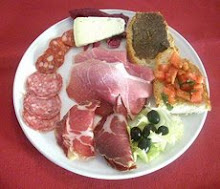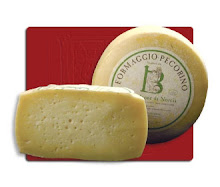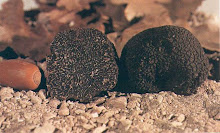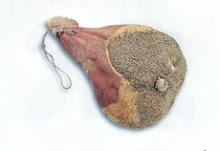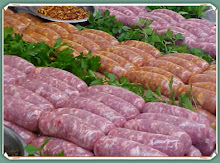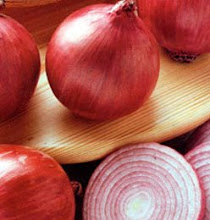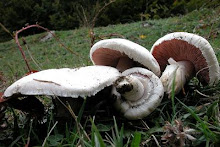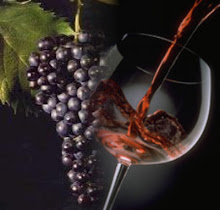http://www.bedandbreakfastrooms.com/Europe/Italy/Umbria/Gubbio/1388/
http://www.bedandbreakfastrooms.com/Europe/Italy/Umbria/Montefalco/1000/
http://www.bedandbreakfastrooms.com/Europe/Italy/Umbria/Assisi/992/
http://www.bedandbreakfastrooms.com/Europe/Italy/Umbria/Assisi/991/
Thursday, January 26, 2012
Sunday, June 20, 2010
Potato Omelette Recipe

Ingredients for 4 people:
* 4 large potatoes
* Grated Parmesan cheese
* Oil for frying
* Parsley
* Salt
* 6 eggs
Preparation:
Wash, peel and cut potatoes into cubes
Later in a shallow dish prepare chopped eggs
and add the Parmesan, salt and chopped parsley.
Put the olive oil to heat in a pan
and slowly pour the potatoes cut into small pieces.
Cook the potatoes until golden brown and help you with a wooden spoon.
Let cool the potatoes into cubes cooked for just over 5 minutes;
then carefully add the chopped eggs to cover all the potatoes and cook for 5 minutes the omelette.
Before serving dry excess oil with kitchen paper.
COLFIORITO AND ITS RED POTATO
Etichette:
colfiorito red potato,
omelette,
potato,
potato omelette,
red potato,
Umbria,
Umbrian recipe
Tuesday, June 30, 2009
Spoleto
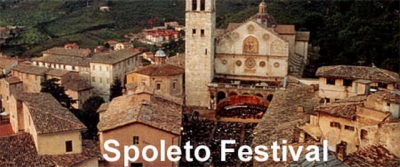
Spoleto (Latin Spoletium) is an ancient city in the Italian province of Perugia in east central Umbria on a foothill of the Apennines. It is 20 km (12 mi) S. of Trevi, 29 km (18 mi) N. of Terni, 63 km (39 miles) SE of Perugia; 212 km (131 miles) SE of Florence; and 126 km (78 miles) N of Rome.
History
Spoleto was situated on the eastern branch of the Via Flaminia, which forked into two roads at Narni and rejoined at Forum Flaminii, near Foligno. An ancient road also ran hence to Nursia. The Ponte Sanguinario of the first century BCE still exists. The Forum lies under today's marketplace.
Located at the head of a large, broad valley, surrounded by mountains, Spoleto has long occupied a strategic geographical position. It appears to have been an important town to the original Umbri tribes, who built walls around their settlement in the 5th century BC, some of which are visible today.
The first historical mention of Spoletium is the notice of the foundation of a colony there in 241 BC; and it was still, according to Cicero colonia latina in primis firma et illustris: a Latin colony in 95 BC. After the Battle of Lake Trasimene (217 BC) Spoletium was attacked by Hannibal, who was repulsed by the inhabitants During the Second Punic War the city was a useful ally to Rome. It suffered greatly during the civil wars of Gaius Marius and Sulla. The latter, after his victory over Crassus, confiscated the territory of Spoletium (82 BC). From this time forth it was a municipium.
Under the empire it seems to have flourished once again, but is not often mentioned in history. Martial speaks of its wine. Aemilianus, who had been proclaimed emperor by his soldiers in Moesia, was slain by them here on his way from Rome (253), after a reign of three or four months. Rescripts of Constantine (326) and Julian (362) are dated from Spoleto. The foundation of the episcopal see dates from the 4th century: early martyrs of Spoleto are legends, but a letter to the bishop Caecilianus, from Pope Liberius in 354 constitutes its first historical mention. Owing to its elevated position Spoleto was an important stronghold during the Vandal and Gothic wars; its walls were dismantled by Totila.
Under the Lombards, Spoleto became the capital of an independent duchy, the Duchy of Spoleto (from 570), and its dukes ruled a considerable part of central Italy. In 774 it became part of Holy Roman Empire. Together with other fiefs, it was bequeathed to Pope Gregory VII by the powerful countess Matilda of Tuscany, but for some time struggled to maintain its independence. In 1155 it was destroyed by Frederick Barbarossa. In 1213 it was definitively occupied by Pope Gregory IX. During the absence of the papal court in Avignon, it was prey to the struggles between Guelphs and Ghibellines, until in 1354 Cardinal Albornoz brought it once more under the authority of the Papal States.
After Napoleon's conquest of Italy, in 1809 Spoleto became capital of the short-lived French department of Trasimène, returning to the Papal States after Napoleon's defeat, within five years. In 1860, after a gallant defence, Spoleto was taken by the troops fighting for the unification of Italy. Giovanni Pontano, founder of the Accademia Pontaniana of Naples, was born here. Another child of Spoleto was Francis Possenti who was educated in the Jesuit school and whose father was the Papal assesor, Francis later entered the Passionists and became Saint Gabriel of Our Lady of Sorrows.
Ancient and lay buildings
* The Roman theater, largely rebuilt. The scene is occupied by the former church of St. Agatha, currently housing the National Archaeological Museum.
* Ponte Sanguinario ("bloody bridge"), a Roman bridge 1st century BC. The name is traditionally attributed to the persecutions of Christians in the nearby amphiteatre.
* Roman amphitheater (2nd century AD). It was turned into a fortress by Totila in 545 and in Middle Ages times was used for stores and shops, while in the cavea the church of San Gregorio Minore was built. The stones were later used to build the Rocca.
* The Palazzo Comunale (13th century).
* Ponte delle Torri, a striking 13th-century aqueduct, possibly on Roman foundations: whether it was first built by the Romans is a point on which scholarly opinion is divided.
* The majestic Rocca Albornoziana, built in 1359–1370 by the architect Matteo Gattapone of Gubbio for Cardinal Albornoz. It has six sturdy towers which formed two distinct inner spaces: the Cortile delle Armi, for the troops, and the Cortile d'onore for the use of the city's governor. The latter courtyard is surrounded by a two-floor porch. The rooms include the Camera Pinta ("Painted Room") with noteworthy 15th‑century frescoes. After having resisted many sieges, the Rocca was turned into a jail in 1800 and used as such until the late 20th century. It is currently under repair.
* The Palazzo Racani-Arroni (16th century) has a worn graffito decoration attributed to Giulio Romano. The inner courtyard has a notable fountain.
* Palazzo della Signoria (14th century), housing the city's museum.
* The majestic Palazzo Vigili (15th-16th centuries) includes the Torre dell'Olio (13th century), the sole mediaeval city tower remaining in Spoleto.
* The Duomo (Cathedral) of S. Maria Assunta, begun around 1175 and completed in 1227. The Romanesque edifice contains the tomb of Filippo Lippi, who died in Spoleto in 1469, designed by his son Filippino Lippi. The church also houses a manuscript letter by Saint Francis of Assisi.
* San Pietro extra Moenia was founded in 419 to house Peter's relics over an ancient necropolis. It was rebuilt starting in the 12th century (though the work dragged on until the 15th century), when a remarkable Romanesque façade was added: this has three doors with rose-windows, with a splendid relief decoration by local artists; with S. Rufino in Assisi, it is the finest extant specimen of Umbrian Romanesque.
* The basilica of San Salvatore (4th-5th century) incorporates the cella of a Roman temple and is one of the most important examples of Early Christian architecture.
* San Ponziano is a notable complex lying outside the city's walls, dedicated to the patron saint of Spoleto. The church was built in the 12th century in Romanesque style, but was later modified by Giuseppe Valadier. The crypt, however, has remained untouched, with its five small naves and small apses with cross-vault, ancient Roman spolia columns and frescoes of the 14th-15th centuries.
* Santa Maria della Manna d'Oro, is an edifice on an octagonal plan sited near the Cathedral. It was built in the 16th-17th century to thank the Madonna for her protection of Spoletine traders.
* San Domenico (13th century) is a Gothic construction in white and pink stone. The interior has notable frescoes and a painting by Giovanni Lanfranco. The crpyt is a former church dedicated to St. Peter, with frescoed walls.
* San Gregorio Maggiore (11th-12th century), is a Romanesque church which has been restored to original lines only in recent times. The façade has two slopes and a porch of the 16th century that includes the Chapel of the Innocents (14th century) with a noteworthy font. The main external feature is the high belfry, finished only in the 15th century. The interior has three naves with spolia columns and pillars.
* The former church of Santi Giovanni e Paolo is a Romanesque edifice featuring, on the exterior, a 13th century fresco portraying Madonna with Saints. The interior frescoes, from the 13th-15th centuries, include some of the most ancient representations of the martyrdom of St. Thomas Becket, by Alberto Sotio, and of St. Francis.
* Santa Eufemia (12th century), a striking example of Romanesque architecture with influences from Lombardy and Veneto. The interior has three naves with spolia columns.
* San Paolo inter vineas (10th century) is a typical Spoletine Romanesque church. Its main feature is the rose-window of the façade.
* The former church and Augustinian convent of San Nicolò (1304) is a rare example of Gothic style in Spoleto. The small church has a single nave with a splendid polygonal apse with mullioned windows. Under the apse is the church of Santa Maria della Misericordia. There are two cloisters, the more recent one pertaining to the 15th century.
* San Filippo Neri is a Baroque construction of mid-17th century, designed by the Spoletine Loreto Scelli and inspired by churches in Rome of the same period.
* Sant'Ansano was created in the 18th century over a series of former buildings including a Roman temple (1st century AD) and the Mediaeval St. Isaac's crypt. It has a cloister from the 16th century.
Culture
The Festival dei Due Mondi (Festival of the Two Worlds) was founded in 1958. Because Spoleto was a small town, where real estate and other goods and services were at the time relatively inexpensive, and also because there are two indoor theatres, a Roman theatre and many other spaces, it was chosen by Gian-Carlo Menotti as the venue for an arts festival. It is also fairly close to Rome, with good rail connections. It is an important cultural event, held annually in late June-early July.
The festival has developed into one of the most important cultural manifestations in Italy, with a three-week schedule of music, theater and dance performances. For some time it became a reference point for modern sculpture exhibits, and works of art left to the city by Alexander Calder and others are a testimony to this.
In the United States, a parallel festival — Spoleto Festival USA — held in Charleston, South Carolina was founded in 1977 with Menotti's involvement. The twinning only lasted some 15 years and, after growing disputes between the Menotti family and the Spoleto Festival USA board, in the early '90s a separation was consummated. However, following Menotti's death in February 2007, the city administrations of Spoleto and Charleston started talks to re-unite the two festivals, that would climax in Spoleto mayor Massimo Brunini's attending the opening ceremony of Spoleto Festival USA in May 2008. The mayor of Charleston, Joseph P. Riley, is expected to attend the opening ceremony of the festival in Italy, 27 June 2008.
For a short period of time, a third parallel festival was also held in Melbourne, Australia.
In 1992, the Spoleto Arts Symposium was initiated with the purpose of bringing talented people from all around the world to study in Spoleto. Now in its 15th season, programs exist for studying opera, cooking, jazz, writing, and a kids camp.
Click here to book a room in or nearby Spoleto
Saturday, May 23, 2009
SPRING SPECIAL: Fresh broad bean & pecorino cheese salad

Ingredients
* about 1,3kg fresh unpodded broad beans (450g/1lb podded weight)
* 5 small celery sticks
* a generous handful of rocket (about 100g/4oz)
* 12 mint leaves, roughly torn
* extra-virgin olive oil , for drizzling
* 175g pecorino , shaved into long strips
FOR THE DRESSING
* 4 tbsp extra-virgin olive oil
* juice of a small lemon
Click here for Spring-Summer Lastminutes in Umbria!
Etichette:
Appetizer,
broad beans,
easy,
fresh dish,
Pecorino Cheese,
quick,
typical recipes,
Umbrian recipe
Saturday, April 4, 2009
Easter Umbrian Pizza with cheese

Ingredients:
5 eggs
300 grams of flour 0
200 g of manitoba
100ml water
25-30 grams of yeast) I put 20 gr. and I can drive about 10 'more)
1 teaspoon sugar
1 teaspoon salt (to taste)
1 teaspoon pepper
5 tablespoons oil evo (Umbria)
50 grams of lard (No substitutes)
250 gr grated cheese mixed (ONLY Parmigiano Reggiano and Pecorino Romano in varying proportions according to taste. Half and half is probably the right way. If you like the most tasty increase the amount of pecorino. To this must be the salt determined by type cheese)
Preparation:
Dissolve the yeast with sugar lukewarm water and leave to ferment in a glass, preferably plastic, for 5-6 min.
Place the flour in a large bowl and make a hole, a well.
Strain into the cockpit of the yeast fermented drink with a spoon and take a bit of flour and mix to a paste molliccia (type ciambellone).
Cover with another flour without kneading, so as to isolate from the stick, and let ferment 40-50 min. (I put less yeast and fermented a little over an hour).
Meanwhile beat the eggs, add salt, pepper, grated cheese and finally the oil: let the flavors mix ...
When the pastel will be all cracked merge as the dough of eggs and cheese and mix with the flour ...
Knead well and at the end combine soft lard. Knead well and long. The dough is soft not exceed 600g of flour.
Allow the dough to rest at room temperature for 45 min. covered, (I mix in mdp and let rise one hour) and then in the baking dish mettelo high, narrow and svasata well unta, and let rise in warm place until the edge of the pan.
Bake at 200 ° C with steam in the first 20 min. Place the pan in the oven just turned in this way the cake is not just the crust and spread out more. Cooking an hour or so.
After 45 min. check with the stick. It must be perfectly dry.
Easter in Umbria, Italy
Monday, March 30, 2009
Umbricelli alla Carbonara

Umbricelli alla Carbonara
(preparation time: 30 minutes)
Ingredients for 4 people:
20 ounces Umbricelli
5 egg yolks
2 tablespoon thickened whipping cream
4 tablespoon Umbrian Parmigiano cheese
4 tablespoon Umbrian Pecorino cheese
salt and black pepper
4 thin slices of bacon, diced
1 garlic cloves
1 cube of butter
Preparation:
Cut bacon up into little pieces and cook until clear in a cube of butter with the garlic clove, removing the garlic after a few minutes. In a large pot of boiling salted water, cook the pasta and drain in a colander. Meanwhile, beat the egg yolks with cream, salt, Parmesan, Pecorino and black pepper. Drain pasta and toss immediately with the bacon, then combine with the egg mixture while it is still very hot. Toss quickly.
Umbricelli are round and string pasta like but not as fine as spaghetti. This thick, chewy egg pasta is a specialty of Northern Umbria and goes well with any hearty sauce. This hearty, homemade durum wheat pasta is perfect for tomato, mushroom, truffle, or other sauce flavors, or for simply tossing with garlic, extra virgin olive oil and red pepper flakes. Cooking time 10-12 min.
Farmhouses in Perugia area
Etichette:
carbonara,
Italian,
pasta recipe,
recipe,
Umbrian pasta,
umbricelli
Friday, March 20, 2009
Four cheese pasta (Pasta ai 4 formaggi)

Ingredients:
1 lb. pasta preferably a short type
1/4 cup creamy Italian gorgonzola cheese
1/4 cup cubed Fontina cheese
1/4 cup Ricotta cheese
1/4 cup fresh grated Umbrian parmesan
2 Tbsp. heavy cream
2 Tbsp. unsalted butter
Instructions:
1. Cook the pasta as directed.
2. A few minutes before the pasta is ready melt all the other ingredients in a nonstick sauce pan over a medium low heat. If it gets dry add a little bit of milk.
3. Drain the pasta, put it back in the pan and fold in the cheese cream. Combine well and serve immediately.
Festival dei Primi d'Italia in Foligno, Perugia
Monday, March 16, 2009
Strangozzi with asparagus

Ingredients for 4-5 guests:
500 gr. Umbrian strangozzi
2 wild asparagus bundles
250 gr. peeled tomatoes
chilli
extra virgin olive oilgarlic 1 clove
salt
Clean the asparagus and cut the soft part in small pieces.
In a pan fry some extra virgin olive oil and the garlic. Add the asparagus and cook for 5 minutes then add the peeled tomatoes and cook other 15 minutes.
At the end add some chilli and salt.
Cook strangozzi pasta and put them in the pan with the mixture above.
NOTE: You can serve the Strangozzi even without tomato. Add only more oil and more asparagus.
Gaite Medieval Market in Bevagna
Gaite Medieval Market in Bevagna
Etichette:
asparagus,
strangozzi,
Umbrian pasta,
Umbrian spaghetti
Sagrantino Wine Gnocchi

Ingredients for 4:
1 kg floury potatoes
300 gr flour
1 egg
salt
1 Sagrantino Passito Wine glass
Butter
1 Sagrantino Passito Wine glass
Caciotta cheese
Boil the potatoes then press them, add the flour, the egg, 1 Sagrantino Passito Wine glass, salt and mix all quickly with the hands. Shape pasta sticks and cut the sticks in 2 cm pieces each.
Cook the gnocchi for a few minutes (until they afloat) then put them in a pan with butter and the other Sagrantino Passito Wine glass.
Once ready put the Gnocchi on a dish and serve with grated Caciotta cheese.
Wine in Umbria
Etichette:
course,
gnocchi,
homemade,
main,
pasta,
Sagrantino,
Sagrantino Passito,
typical Umbrian wine,
wine
Sunday, March 15, 2009
Goose Sauce Tagliatelle

Goose Sauce
INGREDIENTS:
Half a goose, including innards
500 grams (approx. 17.6 ounces) of veal or beef
half onion
2 garlic cloves
celery
parsley
basil
carrot
1.5 kg of peeled plum tomatoes
extra virgin olive oil
salt and pepper
Mince the veal or beef with the goose innards and all of the seasonings. Place it all in a pan with six tablespoons of oil and a cup of water. Add the goose cut into pieces. Boil it until the liquid has evaporated, then add a half cup of red wine. Once the wine has evaporated add the peeled plum tomatoes and let it simmer for a few hours. When the goose meat is well cooked, take out the bones, and put the meat in with the sauce. This will make the sauce richer and more flavorful.
Cook Tagliatelle pasta and ad them the goose sauce.
Events in Umbria
Etichette:
goose sauce,
main course,
pasta,
tagliatelle,
Umbrian recipe
Subscribe to:
Posts (Atom)
